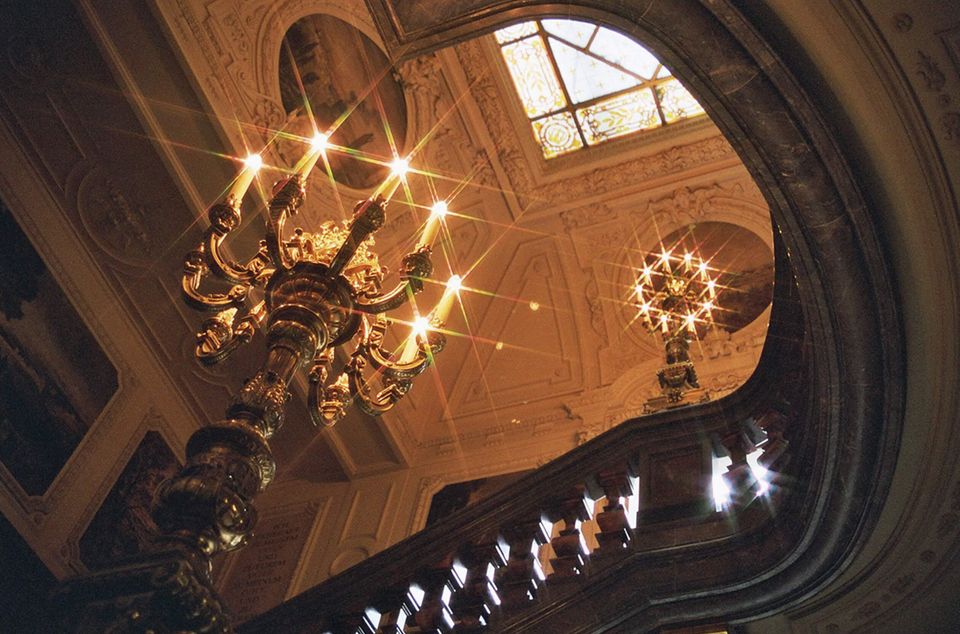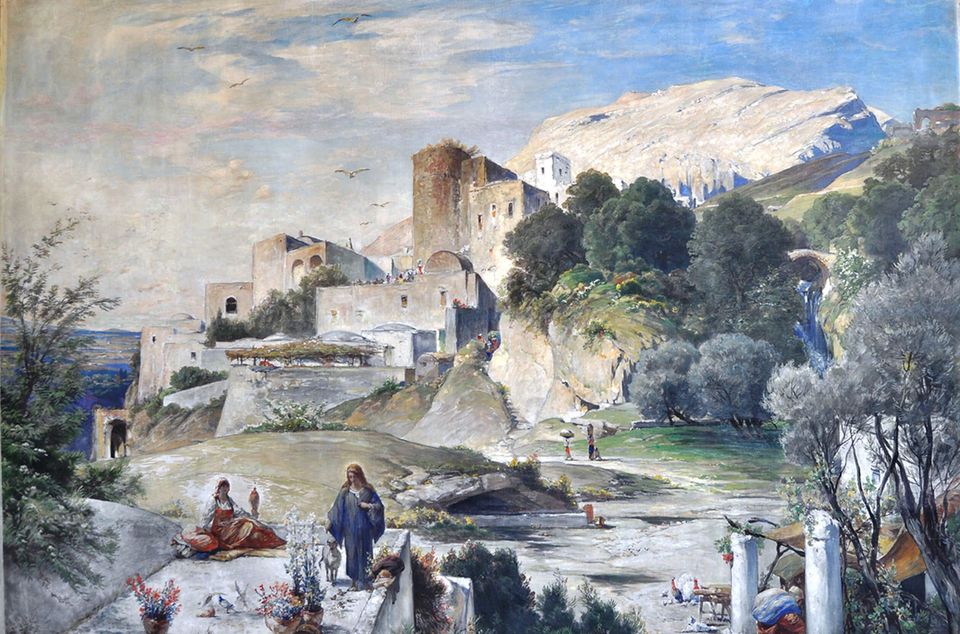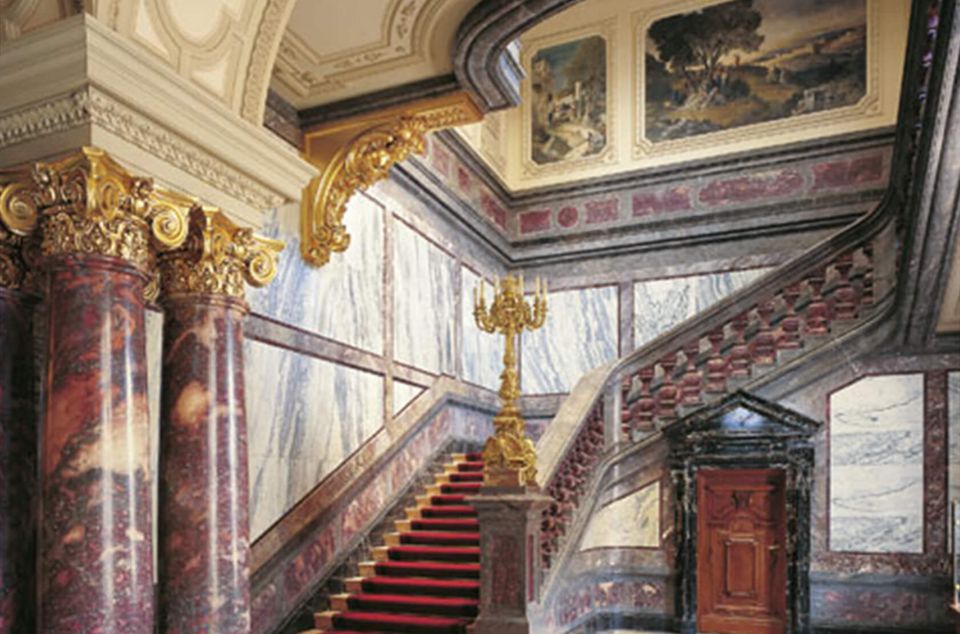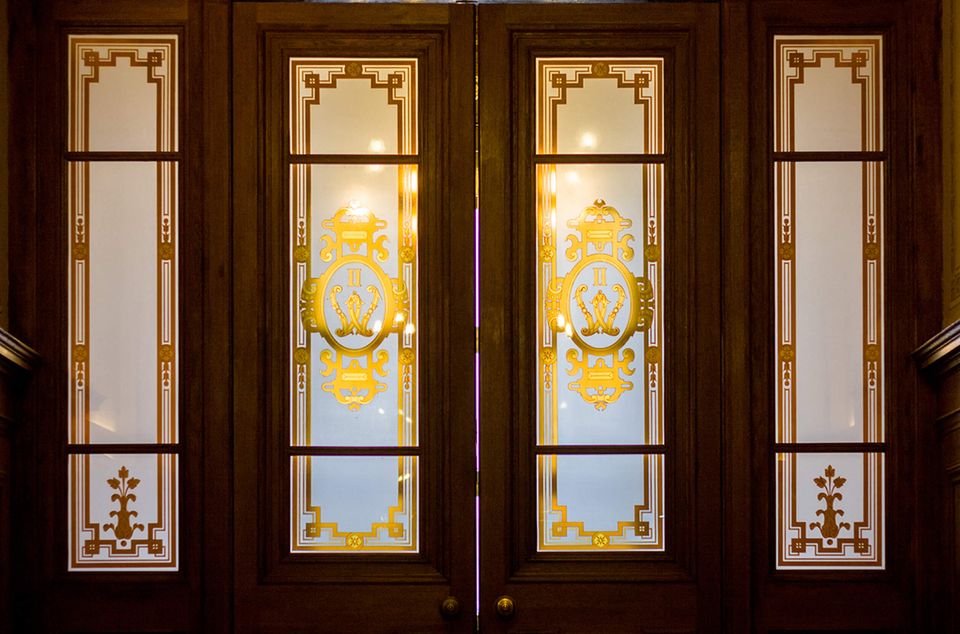Imperial Staircase

The Imperial Staircase is, in addition to the chancel, the most magnificent part of Berlin Cathedral. Up until the end of the monarchy in 1918, Kaiser Wilhelm II. and his wife Kaiserin Auguste Victoria would enter Berlin Cathedral via this staircase. The ruling couple had direct access to the Baptismal and Matrimonial Church from the Imperial Staircase, and to the Imperial Box situated on the upper floor of the Sermon Church. As the Empress had a physical disability, an American company installed an electric elevator directly next to the Imperial Staircase that led to the upper floor.
The fixtures and fittings that can be found in the stairwell are both opulent and magnificent. In addition to many multicoloured types of marble, it was the stone from Unica, a former quarry in the Lahn region that was used, which is today under protection by nature conservation laws. The reddish stone, which is also known as ‘Lahn marble’ (from the Lahn region of Germany) is distinguishable from other types of marble given its wonderfully eye-catching colours and structure.
The plaster capitals that adorn the columns in the Imperial Staircase have been covered with copper. Candelabra and ceiling crowns made of gilded bronze and the gold-coloured door glazing and skylight round off the collection of fixtures and fittings.
13 tempera paintings by Albert Hertel adorn the walls and ceiling on the upper floor.
The wall images display stories from the life of Christ:
- Nazareth – Jesus' youth
- The Mount of Temptation
- Sermon on the Lake
- The Samaritan Woman at Jacob’s Well
- Jesus at the home of Maria and Martha
- Lamentation of Jerusalem
- Jesus in Gethsemane
- Christ appears to Maria at the Tomb after his Resurrection
- Jesus Appears at the Sea of Galilee
The oval ceiling paintings reveal four parables that Jesus told:
- Parable of the Sower
- The Parable of the Good Samaritan
- The Parable of the Pharisee and the Tax Collector
- The Parable of the Good Shepherd.
Original and fake
Of the 13 total images, which decorate the staircase, five were lost during the War, including the image of ‘Nazareth’. Just a black-and-white photograph from the archives held at the State Palace and Gardens in Potsdam serves as a reminder of the Hertel image. There was also a near A4-size colour template. In 1988 the Brandenburg restorer and painter Ekkehard Koch reconstructed the ‘Nazareth’ painting for the Imperial Staircase based on photographs and other colour samples.

In 2011, a former curator at the castles and gardens of Sans Soucis discovered the painting – believed to have been lost long ago – in the so-called ‘foreign ownership catalogue’ of the old National Gallery. Although the picture was slightly damaged, it was returned to Berlin Cathedral. Thanks to a €15,000 donation from the Berlin Cathedral Construction Association (‘Berliner Dombau-Verein’) Koch was recommissioned for a second time with the work for ‘Nazareth’. This time he restored the original that has since hung in the Cathedral. However, it did not return to its original place but rather the Cathedral Museum, where visitors can still admire it today. The copy of the ‘Nazareth’ image is now also part of the Cathedral's history, and thus remained part of the Imperial Staircase.


